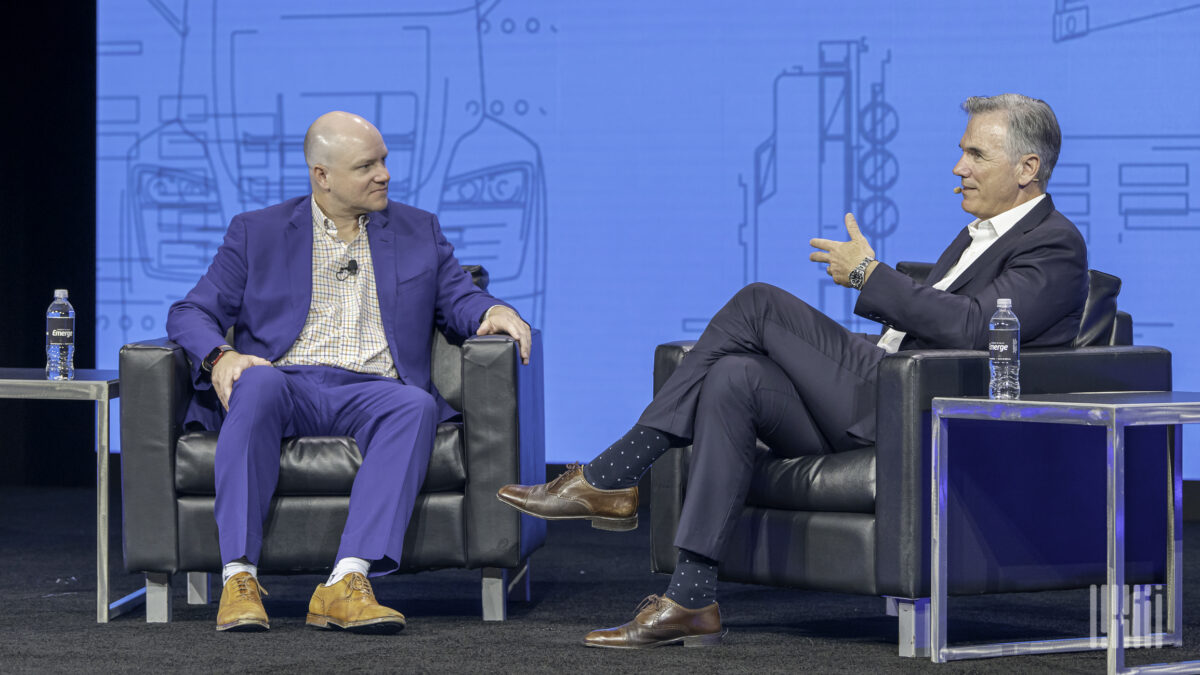Use of data in baseball is about far more than fans and commentators rattling off arcane facts about the New York Yankees or the Boston Red Sox. Statistical analysis today plays a powerful role in forming the best teams.
Fans, owners and players have a deep emotional connection to the sport — and that’s exactly why data analysis can be so useful: It can take the emotion out of decision-making. In fact, it helped a small-market team like the Oakland A’s win six American League West Division titles.
“We had a great platform to use data in an emotional, visceral business,” said Billy Beane, executive vice president of baseball operations for the Oakland A’s. Beane was a keynote speaker during Day 1 of FreightWaves’ Future of the Supply Chain summit in northwest Arkansas.
Beane and FreightWaves founder and CEO Craig Fuller on Monday discussed the role data played in creating a team that would win multiple division titles in the late 1990s and early 2000s.
Beane’s story and those of others involved in leading the Oakland A’s were the subject of the book “Moneyball: The Art of Winning an Unfair Game,” by Michael Lewis. The book became an Academy Award-nominated film in 2012, with Brad Pitt playing Beane.
The book and the movie describe Beane’s “Moneyball” philosophy, which looks at how organizations can effectively, efficiently and profitably manage their assets, talents and resources for short- and long-term gain.
“We follow sports because we get emotional about it. We make decisions with our eyes. And as executives, we did the same thing despite the fact that we had all this data sitting out there for years,” Beane said.
Beane, a retired baseball player, started as a first-round draft pick of the New York Mets in 1980 before playing six major league seasons as an infielder, outfielder and catcher for the Mets, Minnesota Twins, Detroit Tigers and the A’s. His final season was 1989 as a utility player on the A’s World Championship team. After working within the A’s front office as a major league advance scout, he eventually became the club’s general manager in 1997.
In that role, he hired Harvard graduate Paul DePodesta as assistant general manager. Through DePodesta, played by actor Jonah Hill in the movie, Beane transitioned to using data to acquire talent.
“[By] about the mid-’90s, when we went from one of the highest-payroll teams to one of the lowest, we had to find a different way to do things. Otherwise, we were destined to finish where our payroll said we should,” Beane said.

That different way of doing things was collecting data on players’ performance and then relying on statistical methodologies to help determine the best configuration for a winning team, bucking Major League Baseball’s traditional gut-and-instinct culture.
“There was this perception that we were being risky. We actually thought it was completely the opposite. We felt like using data gave us the answers to the test. We felt like we were basically conservative,” Beane said. “We were trying to run a baseball team like actuaries set insurance rates. So for us, the risk would have been guessing when we had the information there in the form of data.”
As the A’s success grew and its data-informed methods expanded, so did the use of data by competing teams.
After the book’s release, “chasing statistics then became the norm … . What ultimately happened with ourselves and other teams over the course of the next decade after the book was [that it led] really smart people to create player performance models, and they were all proprietary. And that’s really what dominated the next decade with a lot of teams,” Beane said. “And then, ultimately, after 10 years, most teams had their own in-house proprietary models very similar to Wall Street firms.”
Although all teams now use data to some degree to make decisions, Beane said, there is still some magic in traditional approaches. The use of scouts as well as data is a powerful combination, he said.
Using scouts “is very much a part of the fabric of baseball, and it goes back years when a scout would go watch a player and make a judgment,” Beane said. “With smart people [doing data analysis], we’ve been able to incorporate those opinions … . They’re weighted differently.”










